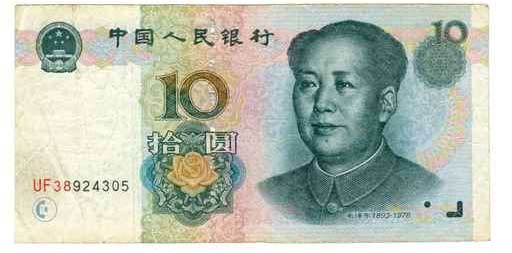The Rise of China

What everyone should know about … A Quarterly series
When the twenty-ninth Olympiad opens in August, the eyes of the world will be on China. The country’s phenomenal economic growth will impress some observers; others will see the dramatic increase in inequality and environmental degradation that have accompanied it; and others still will be deeply disturbed by the government’s poor human-rights record, most recently the crackdown in Tibet and China’s support of the Sudanese government. But whichever element of the Chinese story we might find most salient, all of us must recognize that China, for better or worse, will alter profoundly the global geography of well-being and power in the twenty-first century.
How the Chinese government deals with its growing internal challenges, and how the rest of the world understands and responds to China’s rise, will shape the world’s future stability and prosperity. To promote a better understanding of these critical questions, the McCulloch Center for Global Initiatives focused this year’s Global Challenges Conference on the rise of China. Leading up to the conference, five faculty members team-taught a course on the subject for more than 100 students from across the disciplines. Here are some of the key characteristics and implications of the rise of China we explored and the vexing questions we need to answer.
Inside the Chinese Dragon
In 1978, Deng Xiaoping initiated a set of economic reforms that unleashed high economic growth and a vastimprovement in the standard of living for many Chinese. In twenty-five years, output per person increased more than eightfold, and hundreds of millions of Chinese moved into the middle class. The percentage of the population living on less than $1 per day dropped from more than 60 percent at the time of Mao’s death in 1976 to less than 20 percent today. At no time in history has a large country grown so much for so long, reducing the number of destitute so quickly. An incredible achievement!
On the flip side, the distribution of income has deteriorated substantially, generally in favor of the city versus the countryside, coastal areas versus the interior, and the South versus the North. The Gini coefficient, a common measure of income inequality (with ‘1’ capturing perfect inequality and ‘0’ perfect equality), rose from .32 in 1980 to .47 in 2004. An incredible increase!
China’s high economic growth has also resulted in dramatic environmental deterioration. Indeed, economic growth would be much smaller—some think negligible—if we factored in environmental costs. Because China meets 70 percent of its energy needs with coal, and because much of its production is extremely energy inefficient, China now emits as much carbon dioxide as the United States! (See chart below.) This is simply not sustainable.
Political change has lagged far behind economic change in China, as the Communist Party has maintained control over political decisions. But demonstrations in China have been increasing rapidly, with rising demands for greater government accountability, workers’ rights, human rights, rule of law, and environmental protection. Will the Communist Party be able to maintain its authoritarian stance in light of rising protests? Can it become open In 1978, Deng Xiaoping initiated a set of economic enough to accommodate the genuine demands for reforms that unleashed high economic growth and a vast participation?
China’s Economic Impact
Huge foreign investment and strategic development policies have made China the manufacturing powerhouse of the world, producing both cheap, labor-intensive products such as toys and clothing, and more technologically sophisticated products such as computers and cars. Between 2000 and 2006, China’s share of US imports increased from 8.6 to 16 percent and in the European Union from 2.6 to 5.1 percent. Consumers in developed countries are gaining from China’s competitiveness because it results in lower import prices. But workers are losing as their wages fall. Little wonder then that a Harris poll in April 2008 found that 35 percent of Change to US – for consistency. respondents in Italy, France, Germany, Spain, and the U.K. saw China as the number-one threat to global stability. But citizens everywhere have to understand how closely China’s export prowess is intertwined with the globalization of the world economy, where multinational corporations produce parts and products wherever it is most advantageous and then sell them all over the world. After all, it is the Dells and the Wal-Marts and the Siemens that import from China.
Developing countries are winning and losing as well. China’s rapid economic growth has fueled the demand for natural resources worldwide. The ensuing price increases are good news for developing countries that are net exporters of these commodities, but they are bad news for everybody else. And China’s dynamic competitiveness in manufactured exports is bad news as well, as many developing countries find themselves between a rock and a hard place—with wages too high to compete with China and productivity too low to compete with the developed countries.
The question for both developed and developing countries is what the success of China tells us about how global capitalism needs to be regulated and how social contracts among capital, labor, and governments can be rethought nationally and internationally to make globalization more inclusive.
Geostrategic Implications
And what does China’s rise mean for the United States and its status as sole superpower? There is widespread agreement that US unipolar power is coming to an end. But what will replace it, and how will the transition to a multipolar order be achieved? There is no historic precedent for a dominant world power ceding power peacefully. But one can argue that today’s world is different, where much greater economic interdependence makes China increasingly a stakeholder in the current system.
There are many areas of potential conflict between China and the United States. The race to secure access to basic resources, especially oil and natural gas, is one example. But the two countries also share common concerns and problems, which can and need to form the basis for collaboration rather than confrontation. Both countries want global economic stability. And both need to find ways to reduce energy consumption and protect the environment. China’s unsustainable path toward development mirrors the unsustainability of our own path, and it is in all our interests to change it.
—By Eva Paus
 Eva Paus (left) is MHC professor of economics and Carol Hoffmann Collins Director of the McCulloch Center for Global Initiatives. This article appeared in the summer 2008 issue of the Alumnae Quarterly.
Eva Paus (left) is MHC professor of economics and Carol Hoffmann Collins Director of the McCulloch Center for Global Initiatives. This article appeared in the summer 2008 issue of the Alumnae Quarterly.
Learn More
China–U.S. Comparisons
| China | U.S. | |
| Population & Economy | ||
| Population, 2006, (mi llion)(1) |
1,312 | 300 |
| GDP per person 2006 (constant 2005 $)(1) | 4,501 | 42,610 |
| Cumulative inflow of foreign direct investment, 1980–2006 (billions of current $)(2) |
703 | 2,241 |
| Share of world exports, 2006(3) | 10.1 | 8.6 |
| Energy & Environment | ||
| Renewable water supply per person. (cubic meters) (4) | 2,165 | 10,268 |
| Total energy consumption, 2006 (million tons oil equivalent) (5) |
1,697 | 2,326 |
| Total oil consumption, 2006 (million barrels/day)(6) | 7.4 | 20.6 |
| Coal consumption, 2006 (million tons oil equivalent)(6) | 1,193 | 567 |
| Total carbon dioxide emissions, 2007 (billion tons) (5) |
~6 | ~6 |
| Military Spending | ||
| Military Spending, FY 2007 ( billion $) (7) | $45-$125 | $440-$626 |
Sources: See below.
(1) World Bank. World Development Indicators on-line, accessed April 11, 2008
(2) UNCTAD (United Nations Conference on Trade and Development) 2007. World Investment Report.
(3) IMF (International Monetary Fund). 2007. Direction of Trade Statistics.
(4) United Nations Food and Agriculture Organization, Aquastat database. 1999 for China and 1985 for the US. To arrive at data per capita, I used the population data for 2006.
(5) International Energy Agency. World Energy Outlook 2007.
(6) British Petroleum. Statistical Review of Energy 2007.
(7) For China’s military expenditures: Office of the Secretary of Defense. Military Power of the People’s Republic of China 2007. Annual Report, p. 25. The official Chinese defense budget for 2007 is $45 billion, but the U.S. Defense Intelligence Agency estimates that—including all defense-related expenditures—the budget is somewhere between $85 billion and $125 billion.
For U.S. military expenditures. The defense budget for fiscal year 2007 was $440 billion. But that did not include expenditures for the war in Iraq and other expenditures. Global Issues provides a range of estimates.
August 28, 2008










indeed china economy rises now too.more and more countries depend on their manufacturers